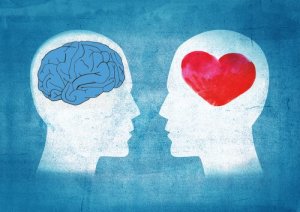Coping Resources: What are They?

People tend to use different strategies to deal with problems. These confrontational strategies are known as coping resources. They can be intentional or involuntary. They help us face the demands and conflicts that are present in our lives.
Due to our experiences and what we’ve learned, each of us has a different ability to cope with different challenges or situations. We also have different strategies that we use to successfully overcome obstacles that these challenges pose.
These resources are important because the richer and more varied they are, the more capable we’ll be when it comes to facing difficulties and obstacles in our path.
“Emotions are the result of a process of cognitive assessment of the situation, coping resources, and what happens if we use those coping resources.”
-Lazarus and Folkman, 1986-
Lazarus’ explanation
When a set of environmental or situational demands appear (for example, a busy work period that will last weeks), the person must respond in a way that allows them to adapt to the situation. In other words, the person has to adapt to these demands by using some coping resources.

So, for example, when we’re facing a situation that’s causing stress or anxiety, we put our coping mechanisms into play in order to resist. This is why Lazarus believes that stress is a broad process of adaptation to the environment. We couldn’t live without these adaptations.
Positive or negative use of coping resources
When we’re faced with an unexpected situation, there are two possible outcomes. The first is that we use coping mechanisms that allow us to get through the situation. In that case, we’re adapting to our circumstances and, therefore, we’re able to make normal use of our resources. However, there’s a second scenario that can play out. In this scenario, the environment is demanding more than we can handle.
Coping resources allow us to adapt to different situations in our environment.
In this second circumstance, the subject sees that there’s an imbalance between what’s required to solve the problem and the skills, abilities, or talents that they have to face the problem. Therefore, this heavy demand can create two different types of reactions in a person.
On one hand, there’s a physiological reaction. This reaction includes an increased heart rate, sweating, increased blood pressure, or dilation of the pulse. On the other hand, an emotional reaction can occur. Symptoms of an emotional reaction include negative valence, along which stress, anxiety, anger, and depression.
Double valuation
Imagine that your partner tells you that they have to travel overseas for work-related reasons. First, according to Lazarus, the person would make a primary assessment of the situation. That is, they would analyze if this event was positive or negative. They would also try to see what the consequences of the event could be and how it would impact them.
Later, they would make a second assessment. In this assessment, rather than focusing on the event itself, they would focus on the person. At this time, they would think about the skills or tools they need to face this situation or new reality. That is, they would try to gather all their coping resources and make use of them. Depending on this last assessment, the person would (or wouldn’t) start generating a stress reaction.

Coping strategies
Traditionally, there’s a large array of these strategies that all take different aspects into account. However, they all take account of the way we evaluate the event and the emotions that event elicits. Therefore, based on these characteristics, professionals usually divide coping resources into two groups:
Strategies focused on the problem
These type of resources are intended to help the person face the situation. They’re meant to give it meaning and allow the person to understand the problems at hand. These strategies are based on the search for solutions to restore the cognitive imbalance caused and on solving or changing the problem. They refer to confrontation and the search for social support and solutions.
Normally, we use them when we see the stressful event as controllable. For example, say we have to perform a lot of tasks in one day. This creates uneasiness and stress in our lives. How do we adapt to this situation? If we use this type of strategy in which we see ourselves as capable, we’ll be able to complete all the tasks.
Strategies focused on emotions
Unlike the previous coping strategies, we usually use these when the situation is so stressful that we perceive it as out of our control. Therefore, what we’re looking for is no longer focused on the problem, but on the emotions that this event elicits. Only after we’ve controlled our emotions can we finally relax. These strategies are meant to restore our emotional balance.

These strategies include self-control, distancing, positive reevaluation, self-incrimination, and escape/avoidance. Regarding this last type of behavior, coping resources based on avoidance seek to only temporarily stray away from the problem. Using this resource, the person will try to escape their problems by doing some other type of activity. They want to get as far away from the source of stress. However, as soon as that activity is over, they’ll have to face that situation again.
You don’t have to follow these coping resources by the book. They’re flexible, just like us. With the appropriate counseling and psychological support, we can use them to manage our stress successfully.
People tend to use different strategies to deal with problems. These confrontational strategies are known as coping resources. They can be intentional or involuntary. They help us face the demands and conflicts that are present in our lives.
Due to our experiences and what we’ve learned, each of us has a different ability to cope with different challenges or situations. We also have different strategies that we use to successfully overcome obstacles that these challenges pose.
These resources are important because the richer and more varied they are, the more capable we’ll be when it comes to facing difficulties and obstacles in our path.
“Emotions are the result of a process of cognitive assessment of the situation, coping resources, and what happens if we use those coping resources.”
-Lazarus and Folkman, 1986-
Lazarus’ explanation
When a set of environmental or situational demands appear (for example, a busy work period that will last weeks), the person must respond in a way that allows them to adapt to the situation. In other words, the person has to adapt to these demands by using some coping resources.

So, for example, when we’re facing a situation that’s causing stress or anxiety, we put our coping mechanisms into play in order to resist. This is why Lazarus believes that stress is a broad process of adaptation to the environment. We couldn’t live without these adaptations.
Positive or negative use of coping resources
When we’re faced with an unexpected situation, there are two possible outcomes. The first is that we use coping mechanisms that allow us to get through the situation. In that case, we’re adapting to our circumstances and, therefore, we’re able to make normal use of our resources. However, there’s a second scenario that can play out. In this scenario, the environment is demanding more than we can handle.
Coping resources allow us to adapt to different situations in our environment.
In this second circumstance, the subject sees that there’s an imbalance between what’s required to solve the problem and the skills, abilities, or talents that they have to face the problem. Therefore, this heavy demand can create two different types of reactions in a person.
On one hand, there’s a physiological reaction. This reaction includes an increased heart rate, sweating, increased blood pressure, or dilation of the pulse. On the other hand, an emotional reaction can occur. Symptoms of an emotional reaction include negative valence, along which stress, anxiety, anger, and depression.
Double valuation
Imagine that your partner tells you that they have to travel overseas for work-related reasons. First, according to Lazarus, the person would make a primary assessment of the situation. That is, they would analyze if this event was positive or negative. They would also try to see what the consequences of the event could be and how it would impact them.
Later, they would make a second assessment. In this assessment, rather than focusing on the event itself, they would focus on the person. At this time, they would think about the skills or tools they need to face this situation or new reality. That is, they would try to gather all their coping resources and make use of them. Depending on this last assessment, the person would (or wouldn’t) start generating a stress reaction.

Coping strategies
Traditionally, there’s a large array of these strategies that all take different aspects into account. However, they all take account of the way we evaluate the event and the emotions that event elicits. Therefore, based on these characteristics, professionals usually divide coping resources into two groups:
Strategies focused on the problem
These type of resources are intended to help the person face the situation. They’re meant to give it meaning and allow the person to understand the problems at hand. These strategies are based on the search for solutions to restore the cognitive imbalance caused and on solving or changing the problem. They refer to confrontation and the search for social support and solutions.
Normally, we use them when we see the stressful event as controllable. For example, say we have to perform a lot of tasks in one day. This creates uneasiness and stress in our lives. How do we adapt to this situation? If we use this type of strategy in which we see ourselves as capable, we’ll be able to complete all the tasks.
Strategies focused on emotions
Unlike the previous coping strategies, we usually use these when the situation is so stressful that we perceive it as out of our control. Therefore, what we’re looking for is no longer focused on the problem, but on the emotions that this event elicits. Only after we’ve controlled our emotions can we finally relax. These strategies are meant to restore our emotional balance.

These strategies include self-control, distancing, positive reevaluation, self-incrimination, and escape/avoidance. Regarding this last type of behavior, coping resources based on avoidance seek to only temporarily stray away from the problem. Using this resource, the person will try to escape their problems by doing some other type of activity. They want to get as far away from the source of stress. However, as soon as that activity is over, they’ll have to face that situation again.
You don’t have to follow these coping resources by the book. They’re flexible, just like us. With the appropriate counseling and psychological support, we can use them to manage our stress successfully.
This text is provided for informational purposes only and does not replace consultation with a professional. If in doubt, consult your specialist.







